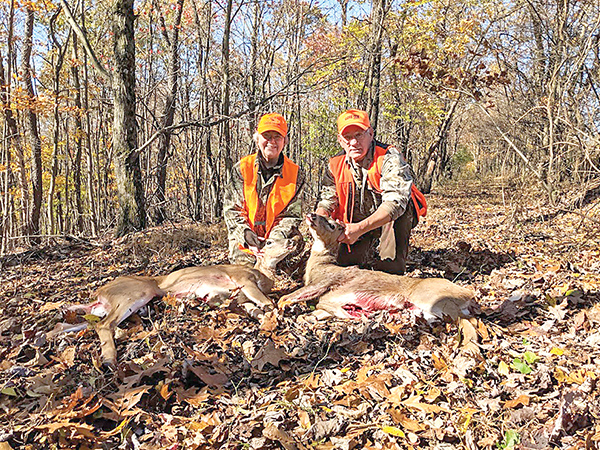I remember when I started deer hunting as a high school kid, there were basically two methods commonly used to bag your deer. One method often used with fair success was the deer drive; several hunters would “post” in a line — maybe on a side hill — and several more hunters would line up and move in the direction of those posted. The plan was to jump deer and push them into the waiting hunters where they would hopefully get some shooting. I’m sure drives resulted in some success, but all too often you found yourself shooting at deer that were badly spooked and often in a dead run.
If you were not a part of a deer drive, you most likely opted to simply walk out into the woods either alone or with a few buddies and take up a stand next to a tree. I didn’t say, “go up into a treestand,” I said to take up a stand or in other words, stand next to a tree. Back then, treestands were pretty much non-existent, or maybe they were little more than a board between two branches with some boards or “rungs” nailed to the side of the tree. During the course of the day, we would often move from one stand or location to another spot next to a tree or a log that offered a good seat and a decent view.
Today, of course, much of this has changed. I suppose there are still some hunting camps that utilize deer drives, and there are still some who trek through the woods and stand for a spell before moving to a new location, but treestands have become the new norm. Treestands come in a variety of forms; the portable stand that you carry out like a backpack and then climb a suitable tree with the stand itself and more permanent type stands with metal ladders and a platform that attaches to a tree. Of course, there is also the third category of stands; this stand looks like a miniature cabin erected on four high posts. This stand often has heaters, seats or chairs, shelves, and windows that open and close.
For the most part, today’s hunters have become much more sedentary, and hunter movement in the woods seems to be far less. This too could be a factor when we hear hunters complaining of seeing less deer than they used to-no doubt since there are far less hunters moving about to keep deer moving. I too choose to be much more sedentary in my approach especially during the archery season but not so during the rifle deer seasons. Not being blessed with private hunting property I often hunt on public land or where someone grants permission to hunt their private property. In this situation, I often find myself reverting back to my old walk and stand for a while approach — these days often referred to as “still hunting.”
In still hunting, you actually do move but very slowly and deliberately-you don’t want to rustle leaves and snap twigs. Obviously, extremely dry leaves make for tough still hunting. Make sure you move in a direction that does not allow your scent to spook deer ahead of you. You also stop frequently and scan the entire area. I look for any slight movement, not necessarily a whole deer. During the Special Firearms Antlerless Only season, my wife and I utilized still hunting techniques. Hardly an hour after we entered the woods, I caught sight of deer legs moving and then the whole deer. My wife dropped her deer at about 40 yards, and a short time later, I dropped mine.
While I certainly make use of treestands and being sedentary when possible, I still find the good old still hunting technique can still be effective.





Leave a Comment
Your email address will not be published. Required fields are marked with *